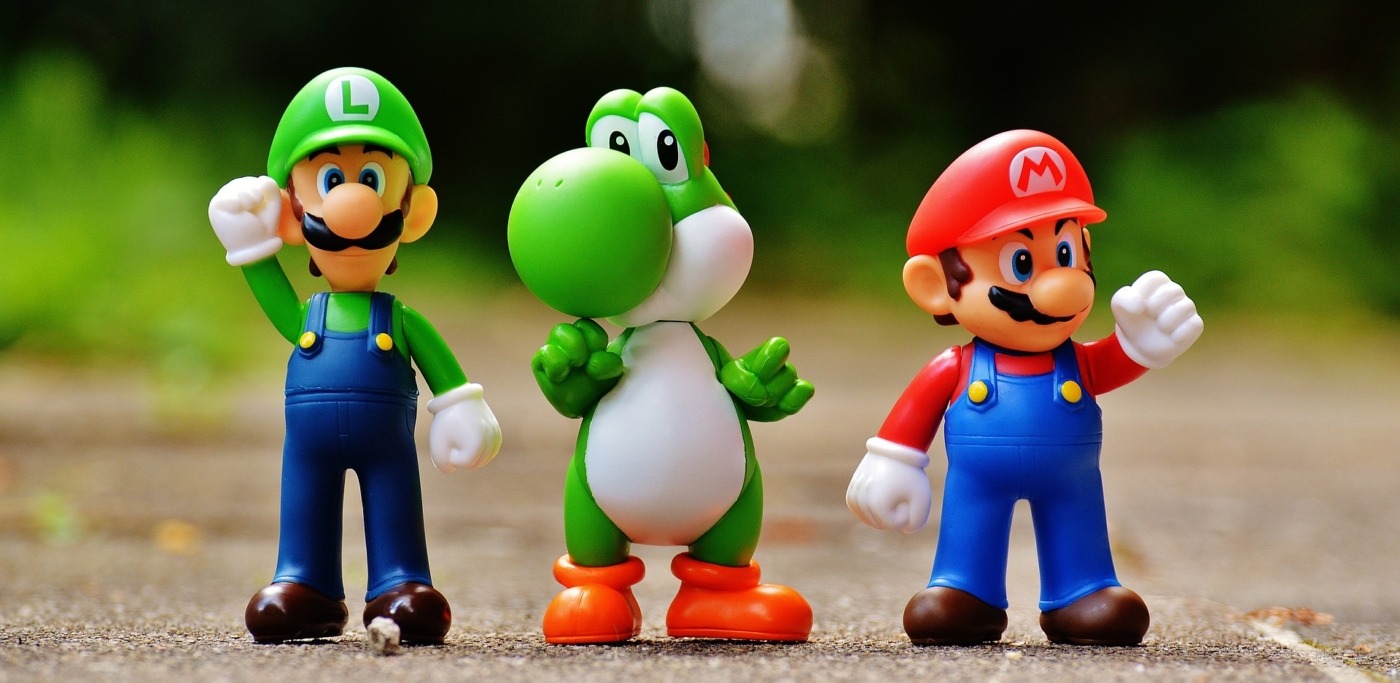Super Mario gravity: the gravitational science of our favourite plumber
I love video games, and I love extrapolating some of the details in game worlds to imagine the wider world. A few years ago, I explored the hidden economic infrastructure in the Mario games, and I’m back to look at the fundamental physics in the Mario world. A lot of experts have dug into the way gravity works in the Mario games, and turned up some interesting results – so let’s dig in.
We can do a few simple sums to calculate the gravity of Mario’s world, and the PBS series Space Time performed these calculations in 2015. Mario can jump around five times his height (which is officially 5’1”, or 1.55m), and it has been suggested that this implies weaker gravity. On the Moon, there’s a sixth of the gravity of Earth, and so you can jump six times higher. What makes Mario different is the speed in which he falls, and his rapid descents instead imply strong gravity.
According to the sums, Mario’s world’s gravity value (g) is eight times as strong as Earth’s – we humans cannot withstand anything higher than about five gs, suggesting Mario would be incredibly strong if he came to Earth (and also potentially explaining his comparatively small height as a grown man). This value was calculated using Super Mario World, and subsequent scholars have looked at different games, creating a range of between five and ten gs. Mario’s incredible jumps, then, emerge from leg strength alone – if he were on Earth, his strength would allow him to jump higher than 90ft (over 27m).
According to the sums, Mario’s world’s gravity value (g) is eight times as strong as Earth’s
This is Mario’s home world, but how about we leap into space for a pair of games that deal with extra-planetary physics? In Super Mario Galaxy and its sequel, the plumber went on a galactic mission to save Princess Peach from Bowser, and it saw him head to a number of galaxies in the process. I’ll ignore some of the more extreme galaxies – assume we aren’t finding planets made of cake like in the Toy Time Galaxy – and look at some of the small planets that Mario navigates.
I’m not the first person to address this – in 2014, a team of students from the Department of Physics and Astronomy at the University of Leicester analysed these planets. In their paper, ‘It’s a-me, Density!’, the team looked at the gravity and density of these worlds, and concluded that they would likely implode in real life. They observed that the planets visited appear to be approximately 100m in diameter, leading to the curvature of their surfaces being not only visible but extreme – Mario could walk around the circumference of a planet in a minute or two.
However, his movement and jumping capabilities on each planet are the same as his home world (the paper uses the surface gravity of Earth but, as we’ve seen, the number could actually be much higher). That implies that they have a similar mass to the world, and would be considerably denser due to their small size, and that leads to issues: If confined in too small a space, elementary particles are not only affected by electric repulsion, but also by quantum repulsion between electrons.
If this quantum force is larger than electric repulsion, electrons become degenerate and exert an additional degeneracy pressure against the gravitational pressure. In white dwarfs this pressure is balanced by gravity to produce a stable body – however, the baby planets in the Super Mario Galaxy games would not have enough mass to have this stability. As the degeneracy pressure far outstrips the gravitational pressure, planets of this size would survive for only a very brief moment before violently destroying themselves. Planets of this size do exist in our own universe – it’s not the size, but rather the physics of Mario, that makes them impossible.
Gravity is a strange beast in the Mario universe. Perhaps that’s unsurprising – a character of the species homo nintendonus who fights an army of creatures controlled by a giant lizard was unlikely to exist in a conventional reality. And thank goodness for that – if Mario’s gravity was even remotely similar to our world, there’d be a lot more ‘Game Over’ screens.

Comments